* Department of Zoology, Silapathar Science College (P.G.), Assam
Science Technology University, Silapathar, Assam. , India
Corresponding auhor email:jashodeb@gmail.com
Article Publishing History
Received: 15/04/2023
Accepted After Revision: 25/06/2023
The solitary aim of our investigation was to explore the avian species richness in Lumding Forest Reserve area, Assam.The survey was cooperated by the team of Zoological Survey of India. After extended survey, 146 species of birds were spotted from Lumding Forest Reserve area, where birds from 17 different orders (Passeriformes, Columbiformes, Accipitriformes , Piciformes, Bucerotiformes ,Gruiformes, Apodiformes, Coraciiformes, Trogoniformes, Cuculiformes, Galliformes, Ciconiiformes, Suliformes , Pelecaniformes , Strigiformes, Anseriformes, Charadriiformes) and 76 families were put down.
The bird species thus obtained were compared with the IUCN Red list from where interesting cum astonishing facts were acquired. The IUCN Red list informed us that, 92.51% bird species spotted were under Least Concern category, where as 3.4% were Near Threatened, 2.72% were Vulnerable, 0.68% were Critically Endangered and Endangered. We considered ourselves successful for obtaining such astouned statistics about the avian species plentitude of Lumding Forest Reserve, which will provoke other researchers to come forward and explore more about this place.
Lumding Forest Reserve Area, Birds, Biodiversity, IUCN
Arjun J, Paul R. Avifaunal Abundance of Lumding Forest Reserve Area, Assam, India. Biosc.Biotech.Res.Comm. 2023;16(2).
Arjun J, Paul R. Avifaunal Abundance of Lumding Forest Reserve Area, Assam, India. Biosc.Biotech.Res.Comm. 2023;16(2). Available from: <a href=”https://bit.ly/2U8EBeg“>https://bit.ly/2U8EBeg</a>
INTRODUCTION
Alike other animals, birds too are a remarkable part of ecosystem with amazing ecological values. They cover almost every corner of the planet. Globally there exists around 9000 species of birds of which india contributes 13% with 1300 species (Grimmett et al., 2000). Birds are watcher’s delight, with their colorful appreance and melodious chirping, they not only increase the beauty of nature and provide intangible aesthetic enjoyment; they play many roles in ecosysytem (Watanuki et al.,2022). There exists a strong interdependence between birds and other organisms of this universe.
These warm blooded vertebrates help in pollination; birds like bulbul, parakeets help in seed dispersal; act as scavengers; helps in pest control in crop fields; manages wetland grazing species like snails, periwinkles; acts as proficient gardeners(Beal et al., 2021) . Prior to their sensitiveness to habitat change, birds are considered as one of the most important indicators of environmental change (Pitera et al., 2021). They play significant role in controlling insect outbreak. Birds like Barn Swallow helps in mosquito control by eating around 850 mosquitoes each day (Vinod et al., 2023).
Lumding is a railway town and a municipal board of Nagaon district. It is the regional divisional headquarter of North –Eastern Frontier Railway, a big important junction and famous for Barak Valley Express, Cachar Express, Hill Queen Express, Agartala-Lumding Express, etc., which passes through scenic routes (Pawar and Salunkhe, 2014). It is also famous for cultural and educational excellence.
Initiated in 1964, The International Union for Conservation of Nature’s (IUCN) Red List of Threatened Species has become the most reliable source regarding conservation of floral and faunal species of the earth (Miskelly et al., 2019). It accords information regarding the population, habitat, threats and conservation initiatives that assists us to take necessary steps towards protection. The Red List is an indicator of the exact position of worlds biodiversity (Sauve et al., 2021). It helps to protect natural resources on which we are dependent for survival. Hence, during our investigation, we checked our findings in the Red List to assure their future existence and safety.
METHODOLOGY
Lumding is a hilly landscape which is covered with dense reserve forest from all sides. Summers are burning here as well as winters can be chilling. Monsoon covers rainfall around 60-125mm. The only hill station of Assam i.e. Haflong is very closer to Lumding. Climate remaining favourable for agricultural practices (Arya and Rao, 2014).
Figure 1: Study area map
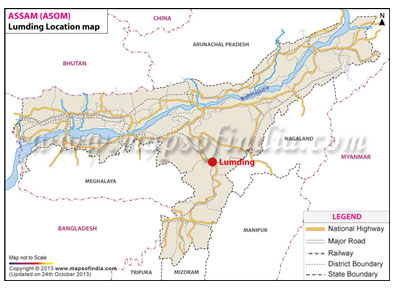
Species density and diversity can be good indicators for measuring abundance of birds in any locality (Javed and Rahmani, 1993). Our survey was carried out from January,2016 to December,2018, where almost all the seasons were covered like Summer (March-June) and Winter (November-March).
For spotting, following methods were preferred,
(1) point count method, (2) direct count method & (3) area search method.
Bird counting was performed from 5.00-8.00 am (morning) and 4.00-6.00 pm (evening). Various species of birds were observed during survey peroid. Observation was performed with the help of field binoculars (10×40). Pictures were captured with Digital Canon EOS 1300D, 18MP DSLR. Renouned Ornithologist Dr. Ghosh and his team from Zoological Survey of India, remained physically present and helped in species identification. Species identification was confirmed with the help of “ Books of Birds of the Indian subcontinent” (Grimmett et al., 2000) and book of Salim Ali “The Book of Indian Birds”, Wikipedia and other resources.
Table 1: Checklist of avian fauna of Lumding Forest Reserve area
| SL NO. | ORDER | FAMILY | COMMON NAME | SCIENTIFIC NAME
|
Feeding habits* | IUCN Red List (2019-22) status**
|
| 1 | Passeriformes
|
Pycnonotidae | Red vented bulbul | Pycnonotus cafer | Nectivorous, Frugivorous, Insectivorous,
Palynivorous |
Least Concern |
| 2 | Campephagidae | Scarlet minivet | Pericrocotus speciosus | Insectivorous, Carnivorous Ophiophagous | Least Concern | |
| 3 | Oriolidae
|
Black headed oriole | Oriolus larvatus | Frugivorous, Insectivorous | Least Concern | |
| 4 | Indian Golden oriole | Oriolus kundoo | Frugivorous, Insectivorous, Nectivorous | Least Concern | ||
| 5 | Pittidae
|
Black crown pitta | Erythropitta ussheri | Carnivorous | Least Concern | |
| 6 | Indian pitta
|
Pitta brachyura | Carnivorous, Insectivorous, | Least Concern | ||
| 7 | Orididae | Maroon oriole | Oriolus traillii | Insectivorous,, Nectivorous | Least Concern | |
| 8 | Alaudidae
|
Eastern skylark
( Oriental skylark) |
Alauda gulgula | Granivorous | Least Concern | |
| 9 | Dicruridae
|
Racket tailed drongo | Dicrorus paradiseus | Insectivorous,, Nectivorous | Least Concern | |
| 10 | Black drongo | Dicrorus macrocercus | Insectivorous, | Least Concern | ||
| 11 | Ashy drongo | Dicrorus leucophaeus | Insectivorous | Least Concern | ||
| 12 | Bronzed drongo
|
Dicrurus aeneus | Insectivorous | Least Concern | ||
| 13 | Nectariniidae | Nepal sunbird | Aethopyga nipalensis | Nectivorous | Least Concern | |
| 14 | Sturnidae
|
Hill myna | Gracula religiosa | Omnivorous , Insectivorous, Frugivorous | Least Concern
|
|
| 15 | Laniidae
|
White crowned shrike | Eurocephalus anguitimens | Insectivorous , Carnivorous | Least Concern | |
| 16 | Bull headed shrike | Lanius bucephalus | Insectivorous , Carnivorous | Least Concern | ||
| 17 | Long tailed fiscal shrike
|
Larius collaris | Insectivorous , Carnivorous | Least Concern | ||
| 18 | Leiothrichidae | Jungle babbler
|
Argya striata | Insectivorous | Least Concern | |
| 19 | Pycnonotidae
|
Black headed bulbul | Pycnonotus atriceps | Insectivorous, Frugivorous | Least Concern
|
|
| 20 | Hirundinidae
|
Red rumped swallow | Cecropis daurica | Insectivorous | Least Concern | |
| 21 | Passeri | Fairy blue bird | Irena puella | Insectivorous, Nectivorous | Least Concern | |
| 22 | Chloropseidae
|
Gold fronted leafbird | Chroropsis aurifrons | Omnivorous | Least Concern | |
| 23 | Orange bellied leafbird | Chloropsis hard wickii | Insectivorous, Nectivorous | Least Concern | ||
| 24
|
Pycnonotidae | Brown eared bulbul | Hypsipetes amaurotis | Insectivorous, Frugivorous, Nectivorous | Least Concern | |
| 25 | Mectarinidae
|
Large browed wagtail | Motacilla moderaspatensis | Insectivorous | Least Concern | |
| 26 | Estrildidae | Spotted munia | Lonchura punctulata | Granivorous | Least Concern | |
| 27 | Black headed munia | Lonchura malacca | Granivorous | Least Concern | ||
| 28 | Ploceidae | Baya weaver bird
|
Ploceus philippinus | Granivorous, Insectivorous | Least Concern | |
| 29 | Dicruridae | Lesser racket tailed drongo
|
Dicrurus remifer | Insectivorous | Least Concern | |
| 30 | Muscicapidae
|
White rumped magpie | Copsychus malabaricus | Insectivorous , Carnivorous | Least Concern | |
| 31 | Sturnidae
|
Common myna | Acridotheres tristis | Insectivorous, Granivorous, Carnivorous, Omnivorous | Least Concern | |
| 32 | White headed starling | Sturnia erythropygia
|
Insectivorous | Least Concern | ||
| 33 | Brahminy starling | Sturnus pagodarum | Omnivorous | Least Concern | ||
| 34 | Jungle myna | Acridotheres fuscus | Omnivorous | Least Concern | ||
| 35 | Indian Pied myna | Gracupica contra | Omnivorous | Least Concern | ||
| 36 | Motacilladae | Yellow wagtail | Motacilla flava | Insectivorous | Least Concern | |
| 37 | Citrine wagtail | Motacilla citriola | Insectivorous | Least Concern | ||
| 38 | Turdidae
|
Common black bird | Turdus merula | Omnivorous | Least Concern | |
| 39 | Vangidae
|
Indian wood shrike | Tephrodornis pondicerianus | Insectivorous | Least Concern | |
| 40 | Motacilladae | Indian paddy field pipit | Anthus rufulus | Insectivorous | Least Concern | |
| 41 | Paridae | Great tit | Parus major | Insectivorous | Least Concern | |
| 42 | Alaudidae
|
Black lark | Melanocorypha yeltoniensis | Insectivorous | Least Concern | |
| 43 | Sand lark | Alaudala raytal | Insectivorous | Least Concern | ||
| 44 | Corvidae
|
Jungle crow | Corvus culminatus | Frugivorous | Least Concern | |
| 45 | House crow | Corvus splendens | Omnivorous | Least Concern | ||
| 46 | Monarchidae | Paradise flycatcher | Terepsiphone paradisi | Insectivorous | Least Concern | |
| 47 | Muscicapidae | Blue flycatcher | Cyornis tickelliae | Carnivorous | Least Concern | |
| 48 | Chloropseidae | Leaf bird | Chloropsis flavipennis | Insectivorous, Frugivorous, Nectivorous | Vulnerable | |
| 49 | Laniidae | Brown shrike | Lanius cristatus | Insectivorous | Least Concern | |
| 50 | Muscicapidae
|
Shama bird | Copsychus malabaricus | Insectivorous, Frugivorous | Least Concern | |
| 51 | Slaty backed forktail bird | Enicurus schistaceus | Carnivorous | Least Concern | ||
| 52 | Plumbeous redstart | Rhyacornis fuliginosa | Insectivorous, Carnivorous | Least Concern | ||
| 53 | Leiothrichidae
|
Grey sibia | Heterophasia gracilis | Insectivorous, Frugivorous | Least Concern | |
| 54
|
Jungle babbler | Turdoides striata | Insectivorous, Granivorous, Nectivorous | Least Concern | ||
| 55 | Common babbler | Argya caudata | Omnivorous | Least Concern | ||
| 56 | White crowned shrike | Eurocephalus ruppelli | Carnivorous | Least Concern | ||
| 57 | Psittaculidae | Alexandrine parakeet | Psittacula eupatria | Omnivorous | Near Threatened | |
| 58 | Laniidae | Red breasted parakeet | Psittacula alexandri | Frugivorous, Granivorous | Near Threatened | |
| 59 | Pnoepygidae
|
Pygmy cupwing | Pnoepyga pusilla | Insectivorous | Least Concern | |
| 60 | Pellorneidae | Brown capped babbler | Pellomeum fuscocapillus | Insectivorous | Least Concern | |
| 61 | Marsh spotted babbler | Pellomeum palustre | Insectivorous | Vulnerable | ||
| 62 | Paradoxornithidae | Grey headed parrot bill | Psittiparus gularis | Insectivorous | Least Concern | |
| 63 | Corvidae
|
Red whiskered bulbul | Pycnonotus jocosus | Insectivorous, Frugivorous | Least Concern | |
| 64 | Black browed treepie | Dendrocitta frontalis | Carnivorous | Least Concern | ||
| 65 | Passeridae | House sparrow | Passer domesticus | Insectivorous | Least Concern | |
| 66 | Tree sparrow | Passer montanus | Insectivorous | Least Concern | ||
| 67 | Paridae
|
Oriental tit | Parus minor | Omnivorous, Molluscivorous | Least Concern | |
| 68 | Anatidae | Pin tail duck | Anas acuta | Granivorous | Least Concern | |
| 69 | Piciformes
|
Megalaimidae | Large green barbet | Psilopogon zeylanicus | Frugivorous, Insectivorous
|
Least Concern |
| 70 | Coppersmith barbet | Psilopogon
haemacephalus |
Frugivorous | Least Concern | ||
| 71 | Picidae
|
Golden backed woodpecker | Dinopium benghalense | Insectivorous | Least Concern | |
| 72 | Large golden backed woodpecker | Chrysocolaptes guttacristatus | Frugivorous, Insectivorous, Granivorous | Least Concern | ||
| 73 | Rufous piculet | Sasia abnormis | Insectivorous,
Carnivorous |
Least Concern | ||
| 74 | Darjeeling pied woodpecker | Dendrocopos darjellensis | Insectivorous | Least Concern | ||
| 75 | Heart spotted woodpecker | Hemicircus canente | Insectivorous | Least Concern | ||
| 76 | Large yellow fronted woodpecker | Melanerpes flavifrons | Insectivorous, Frugivorous | Least Concern | ||
| 77 | Rufous woodpecker | Micropternus brachyurus | Insectivorous, Frugivorous, Nectivorous
|
Least Concern | ||
| 78 | Bucerotiformes | Bucerotidae | Grey hornbill | Ocyceros birostris | Granivorous | Least Concern
|
| 79 | Upupidae | Hoopoe | Upupa sp | Insectivorous , Carnivorous | Least Concern | |
| 80 | Gruiformes | Rallidae | Coot | Fulica atra | Omnivorous | Least Concern
|
| 81 | Rallidae
|
Common moorhen | Gallinula chloropus | Omnivorous | Least Concern | |
| 82 | Western swamphen | Porphyrio porphyrio | Omnivorous | Least Concern | ||
| 83 | Ardeidae
|
Little egret | Egretta garzetta | Carnivorous | Least Concern | |
| 84 | Apodiformes | Trochilidae | Ruby throated hummingbird | Archilochus colubris | Insectivorous, | Least Concern |
| 85 | Accipitriformes | Accipitridae
|
Indian white rumped vulture | Gyps bengalensis | Carnivorous | Critically Endangered |
| 86 | Shikra ( Indian shikra) | Accipiter badius | Insectivorous | Least Concern | ||
| 87 | Pariah kite | Milvus migrans | Carnivorous, Avivorous | Least Concern | ||
| 88 | Pied harrier | Circus melanoleucos | Insectivorous,
Avivorous |
Least Concern | ||
| 89 | Crested serpent eagle
|
Spilornis cheela | Insectivorous,
Ophiophagous |
Least Concern | ||
| 90 | Black winged kite | Elanus caeruleus | Insectivorous | Least Concern | ||
| 91 | Black eared baza | Aviceda leuphotes
|
Insectivorous | Least Concern | ||
| 92 | Changeable hawk eagle | Nisaetus cirrhatus | Avivorous | Least Concern | ||
| 93 | Crested serpent eagle | Spilornis cheela | Carnivorous, Avivorous, Carnivorous | Least Concern | ||
| 94 | White tailed eagle | Haliaeetus albicilla | Carnivorous | Least Concern | ||
| 95 | Columbiformes | Columbidae | Spotted dove | Stiloopelia chinensis | Frugivorous, Granivorous, Insectivorous | Least Concern |
| 96 | Ring necked dove | Streptopelia capicola | Frugivorous, Granivorous, Insectivorous | Least Concern | ||
| 97 | Emerald dove | Chalcophaps indica | Frugivorous | Least Concern | ||
| 98 | Red turtle dove | Streptopelia tranque baricha | Granivorous, | Least Concern
|
||
| 99 | Green imperial pigeon | Ducula aenea | Granivorous | Near Threatened | ||
| 100 | Rock pigeon | Columba livia | Granivorous, Frugivorous, Insectivorous | Least Concern
|
||
| 101 | Imperial pigeon | Dacula sp | Frugivorous | Least Concern | ||
| 102 | Spotted dove | Spoilopelia chinenois | Insectivorous | Least Concern | ||
| 103 | Coraciiformes
|
Meropidae
|
Chestnut headed bee eater | Merops leschenaulti | Insectivorous | Least Concern
|
| 104 | Green bee eater | Merops orientalis | Insectivorous , Carnivorous | Least Concern | ||
| 105 | Alcedinidae
|
White breasted kingfisher | Halcyon smyrnensis | Insectivorous , Carnivorous | Least Concern | |
| 106 | Common kingfisher | Alcedo anthis bengalensis | Carnivorous, Insectivorous, Piscivorous | Least Concern | ||
| 107 | Trogoniformes | Trogonidae
|
Red headed trogon | Harpactes erythrocephalus | Insectivorous | Least Concern |
| 108 | Cuculiformes
|
Cuculidae | Crow pheasant | Centropus sinensis | Carnivorous | Least Concern |
| 109 | Asian koel | Eudynamys scolopaceus | Omnivorous | Least Concern | ||
| 110
|
Galliformes
|
Phasianidae
|
Black francolin | Francolinus francolinus | Insectivorous | Least Concern |
| 111 | Grey partridge | Perdix perdix | Insectivorous, Granivorous | Least Concern | ||
| 112 | Jungle bush quail | Perdicula asiatica | Frugivorous , Granivorous | Least Concern | ||
| 113 | Red jungle fowl | Gallus gallus | Frugivorous | Least Concern | ||
| 114 | Kalij pheasant | Lophura leucomelanos | Omnivorous | Least Concern | ||
| 115 | Dicacidae | Plain coloured flower pecker | Diacacum minullum | Frugivorous, Nectivorous | Least Concern | |
| 116 | Pycnorotidae | Black bulbul | Hypsipetes leucocephalus | Insectivorous, Granivorous | Least Concern | |
| 117 | Ciconiiformes | Ciconiidae
|
Greater adjutant | Leptoptilos dubius | Omnivorous,
Carnivorous |
Endangered |
| 118 | Lesser adjutant | Leptoptilos javanicus | Omnivorous,
Carnivorous, Piscivorous |
Vulnerable | ||
| 119 | Black necked stork | Ephippiorhynctus asiaticus | Carnivorous | Near Threatened | ||
| 120 | Scaly breasted stork | Anastomus oscitans | Carnivorous, Molluscivorous | Least Concern | ||
| 121 | Suliformes
|
Phalacrocoracidae
|
Little cormorant | Microcarbo niger | Carnivorous | Least Concern |
| 122 | Large cormorant | Phalacrocorax carbo | Carnivorous | Least Concern | ||
| 123
|
Indian cormorant | Phalacrocorax fusicollis | Carnivorous | Least Concern | ||
| 124 | Anhingidae | Darter | Anhinga sp | Piscivorous
|
Near threatened | |
| 125 | Pelecaniformes
|
Ardeidae
|
Great egret | Ardea alba | Carnivorous | Least Concern |
| 126 | Medium egret | Ardea intermedia | Carnivorous | Least Concern | ||
| 127 | Cattle erget | Bubulcus ibis | Carnivorous | Least Concern | ||
| 128 | Yellow bittern | Ixobrychus sinensis | Carnivorous | Least Concern | ||
| 129 | Chinese pond heron | Ardeola bacchus | Carnivorous | Least Concern | ||
| 130 | Indian pond heron | Ardeola grayii | Carnivorous | Least Concern | ||
| 131 | Night heron | Nycticorax nyctanassa | Insectivorous,
Avivorous, Piscivorous |
Least Concern | ||
| 132 | Bittern | Botaurus stephens | Carnivorous | Least Concern | ||
| 133 | Tiger heron | Tigrisoma lineatum | Carnivorous | Least Concern | ||
| 134 | Strigiformes | Strigidae
|
Jungle owlet | Glaucidium radiatum | Insectivorous | Least Concern |
| 135 | Brown fish owl | Ketupa zeylonensis | Piscivorous | Least Concern | ||
| 136 | Tytonidae | Barn owl | Tyto alba | Carnivorous | Least Concern | |
| 137 | Anseriformes
|
Anatidae | Common pochard | Aythya ferina | Molluscivorous, Insectivorous | Vulnerable |
| 138 | Lesser whistling duck | Dendrocygna javanica | Gregarious | Least Concern | ||
| 139 | Brahminy duck | Tadorma ferruginea | Omnivorous | Least Concern | ||
| 140 | Charadriiformes | jacanidae
|
Pheasant tailed jacana | Hydrophasianus chirurgus | Insectivorous, Molluscivorous | Least Concern |
| 141 | Bronze winged jacana | Metopidius indicus | Insectivorous | Least Concern | ||
| 142 | Charadriidae
|
Red wattled lapwing | Vanellus indicus | Insectivorous, Granivorous,
Molluscivorous |
Least Concern | |
| 143 | Spur winged lapwing | Vanellus spinosus | Insectivorous | Least Concern | ||
| 144 | Laridae | River tern | Sterna aurantia | Insectivorous,
Piscivorous |
Vulnerable | |
| 145 | Indian robin
|
Saxicoloides fulicatus | Insectivorous | Least Concern | ||
| 146 | Scolopacidae
|
Long toed stint | Calidris subminuta | Insectivorous, Molluscivorous, Granivorous | Least Concern |
*Piscivorous: fish eater birds; Palynivorousbirds: pollen eater birds; Nectivorous: necter eater birds; Ophiophagous: snake eater birds; Mucivorous: mucus eater birds; Molluscivorous: mollusce eater birds; Granivorous: grain eater birds; Frugivorous: fruit eater birds; Carnivorous: meat eater birds; Avivorous: bird eater birds.
**Extinct in the wild (EW) – Known only to survive in captivity; Extinct (EX) – No known individuals remaining; Critically Endangered (CR) – Extremely high risk of extinction in the wild; Endangered (EN) – High risk of extinction in the wild; Vulnerable (VU) – High risk of endangeredment in the wild; Near Threatened (NT) – Likely to become endangered soon; Least Concern (LC) – Lowest risk. Does not qualify for a more at risk category; Data Deficient (DD) – Not enough data to assess its risk of extinction; Not Evaluated (NE) – Has not yet ben evaluated against the criteria.
Figure 2: Graphical representation showing order wise abundance
of avian fauna in Lumding Forest Reserve area
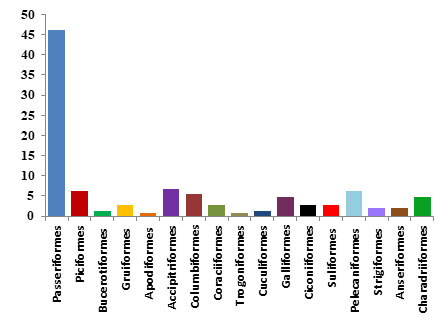
Figure3: Graphical representation showing IUCN status of avian
fauna spotted in Lumding Forest Reserve area
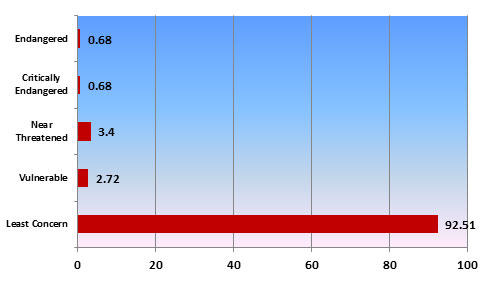
Figure4: Pictures of some birds spotted from Lumding Forest Reserve area
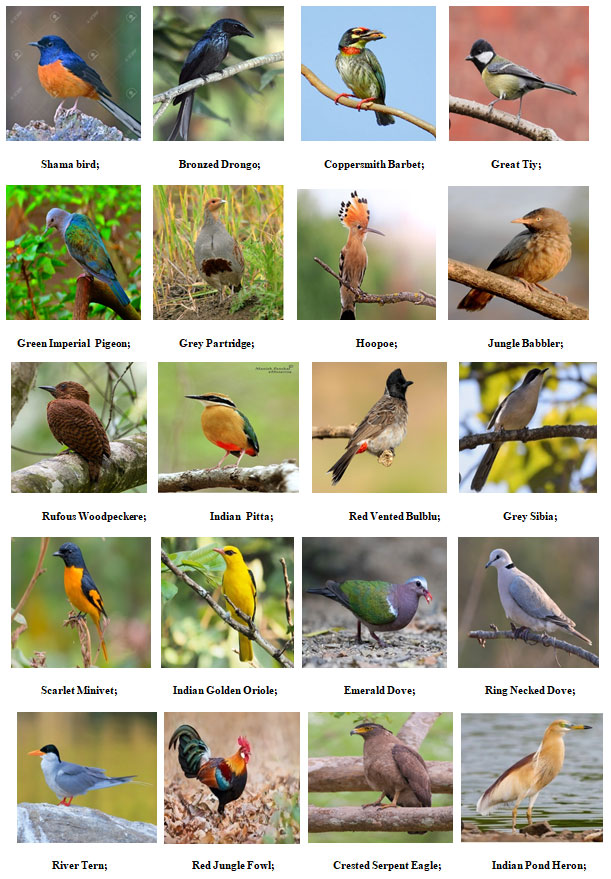
Figure 5: Pictures of some birds spotted from Lumding Forest Reserve area
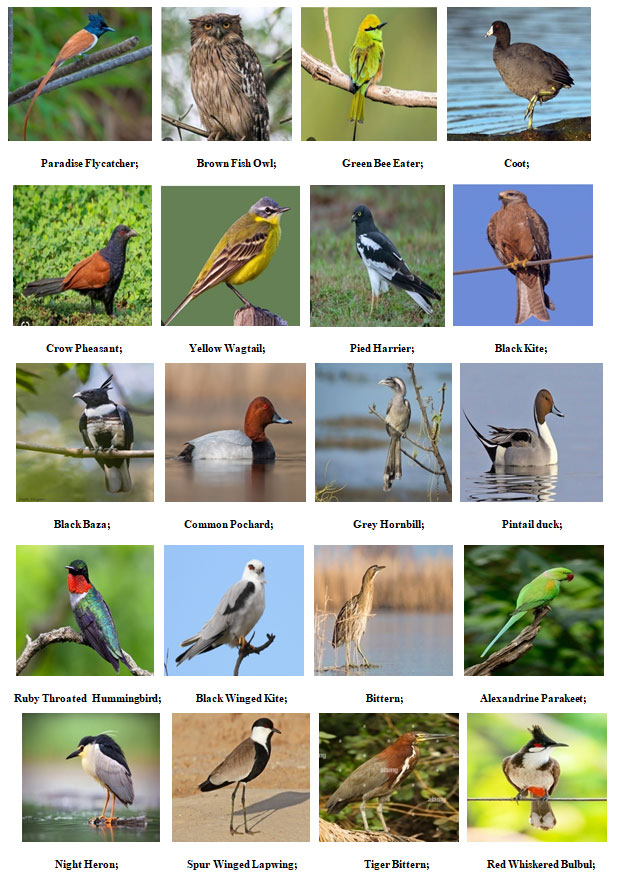
RESULTS AND DISCUSSION
North-East India refers to the easternmost region of India consisting of contiguous seven sister states, Sikkim and parts of North Bengal (district of Darjeeling , Jalpaiguri and Kochbihar) (Javed and Rahmani, 1993). North East India is ethnically distinct from the other states of India, linguistically the region is distinguished by preponderance of Tibeto- Burman languages. Strong ethnic cultures that had escaped sanskritization effects permeate the region. The eight states from a special category is officially recognized (Peralta et al., 2020).
Lumding Reserve Forest is a compact large block of forest, measuring 252.9 sq. Kms and comparatively has less human disturbance. This forest gives shelter to a large variety of floral as well as faunal species (Arya and Rao, 2014). As the forest area of neighbouring Karbi Anglong district and N.C.Hills district are affected by shifting cultivation, the herbs of Asiatic Elephant takes shelter in Lumding Reserve Forest (Joshi and Shrivastava, 2012).
The principal type of forest found in Lumding is degraded moist mixed deciduous forest type (Khan, Rao and Wani, 2012). Lumding Reserve Forest is also habitat for a huge variety of medicinal plants like Sarpagandha, Basaka, Ahoi, Hilikha, etc. Among all the floral species Teak and Gamari are found to dominate in Lumding Reserve Forest (Javed and Rahmani, 1993). Among the climbers, Mikennia sp. predominates where canopy is open and other climbers are Bridelia sp., Butea parviflora, disoscorea sp., Clematis sp. . Himalayan black bear, Clouded Leopard, Crab eating mongoose, Slow loris, Assamese Macaque, Hoolock gibbon, Asiatic jackal,etc. comes under faunal diversity of Lumding.
146 species of birds were spotted from Lumding Forest Reserve area during our survey; Of which, 17 different avian orders including Passeriformes, Columbiformes, Accipitriformes , Piciformes, Bucerotiformes ,Gruiformes, Apodiformes, Coraciiformes, Trogoniformes, Cuculiformes, Galliformes, Ciconiiformes, Suliformes , Pelecaniformes , Strigiformes, Anseriformes, Charadriiformes were detected. Noticably, Passeriformes showed highest species frequency with 46.25% abundance which was followed by Accipitriformes (6.8%), Piciformes and Pelecaniformes(6.12%) ; Columbiformes(5.44%); Galliformes and Charadriiformes(4.76%); Gruiformes, Coraciiformes, Suliformes, Ciconiiformes(2.72%); Strigiformes, Anseriformes(2.04%); Cuculiformes, Bucerotiformes (1.36%); Trogoniformes , Apodiformes (0.68%). Under 17 spotted orders, total 76 families were recorded. Passeriformes came out with maximum number of families (44).
The IUCN status of avian species richness of Lumding revealed that 92.51% birds of Limding are Least Concern indicating their sufficient existance, where as 3.4% are Near Threatened, 2.72% are Vulnerable, 0.68% are Critically Endangered and Endangered. Birds like River tern, Common pochard, Lesser adjutant, Greater adjutant, Indian white rumped vulture, Marsh spotted babbler, Black necked stork , Alexandrine parakeet , Darter which were found under Critically Endangered, Near Threatened, Vulnerable and Endangered category of IUCN demands our attention to work for their conservation and protection from becoming extinct.
CONCLUSION
Its extremely worrying that the number of Critically Endangered birds on the IUCN Red List continues to increase, despite successful conservation initiatives around the world”, says Simin Stuart, Chair of IUCN’s Species Survival Commission. Hence, it becomes immense important to work for the safety and security of birds at global level. Although our work was very small but we expect that it will motivate other researchers to work in this field so that rare species of birds can servive for long.
ACKNOWLEDGEMENT
Authors are greatful to Dr. Ghosh (Ornithologist) and his team from Zoological Survey of India, for their full hearted cooperation, involvement and remaining physically present during the investigation period and helping in identification of birds.
REFERENCES
Ainsworth, G.B., Fitzsimons, J.A., Weston, M.A. and Garnett, S.D. (2018). The culture of bird conservation: Australian stakeholder values regarding iconic , flagship and rare birds. Biodiversity Conservation, 27(2), 345-363.
Arya, M., Rao, R.J. (2014). Avianfaunal occurance and distribution of wetland birds in Sakhya Sagar and Madhav lakes in Madhav National Park, Shivpuri, India. Journal of Environmental Biology, 35:703-708.
Balapure,S., S. Dutta and Vyas,V. (2012) . Avian diversity in Barna wetland in Narmada Basin in Central India. Journal of Research in Biology, 2(5):460-468.
Beal, M., Dias, M.P., Phillips, R.A., Oppel, S., Hazin, C., Pearmin, E.J., Cayrt, P.( 2021). Global political responsibility for the conservation of albatrosses and large petrols. Adv., 27, eabd7225.
Borray- Escalante, N.A., Mazzoni, D., Ortega-Segalerva, A., Arroyo, L., Morera-Pujol, V., Gonzalez-Solis, J., Senar, J.C.(2020). Diet assessments as a tool to control invasive species: Comparison between Monk and Rose-ringed parakeets with stable isotopes. J.Urban Ecol., 6, juaa005.
Colin J, Bibby Nell, D.(1992). Birds census techniques. Academic press limited, London.
Core Team. R.(2020). A Language and Environment for Statistical Computing , R. Foundation for Statistical Computing: Vienna, Austria.
Gill, F. and Wright, M, (2006). Birds of World: Recommended English Names. Princeton NI: Princeton University Press, Version 2.2 generated on 2009-08-25.
Grimmett, R., I., Inskipp, C. And Inskipp, T., (1998). Birds of the Kotzebue south region , Alaska Jr. Columbia. Natural History of the Cook Inlet Region, Alaska. 21:1-87.
Grimmett, R., Inskipp, C. and Inskipp, T. (2000). The pocket Guide to the Birds of Indian Subcontinent. Oxford University Press,
Hernandez-Brito, D., Carrete, M., Blanco, G., Romero-Vidal, P., Senar, J.C., Mori, E., White, T.H., Luna, A. and Tella, J.L.(2021) The Role of Monk Parakeets as Nest-Site Facilitators in Their Native and Invaded Areas. Biology, 10, 683.
Myiopsita monachus (Monk Parakeet). Global Invasive Species Database (GISD). Available online :http://www.issg.org/database.
Javed, S. and Rahmani, A.R. (1993). Conservation of the avifauna of Dudhwa national Park, India. 14:57-66.
Joshi, P. and Shrivastava, V.K. (2012). Avifaunal diversity of Tawa Reservoir and its surrounding areas of Hoshangabad District (MP). International Journal of Plant, Animal and Environmental Sciences, 2(1): 46-51.
Khan, A.K., Rao, R.J. and Wani, R.A. (2012). Studies on bird diversity of Overa-aru Wildlife Sanctuary of Jammu and Kashmir, India. Journal of Threatened Taxa. 4(13): 3228-3232.
Miskelly, C.M., Gilad, D., Taylor, G.A., Tennyson, A.J., Waugh, S.M.( 2019) . Areview of the distribution and size of gadfly petrol (Pterodroma spp.) colonies throughout New Zealan. Tuhinga, 30, 93-173.
Pawar, S.K. and Salunkhe, P.S. (2014). The migratory birds in and around Pandharpur city with special reference to Takali (Padmavati) Lake, Pandharpur, Dist. Solapur (M.S.) Avishkar-Solapur University journal, Vol. 3.pp-38-44.
Pitera, A.M., Branch, C.L., Sonnenberg, B.R., Benedict, L.M., Kozlovsky, D.Y. and Pravosudov, V.V.(2021). Reproduction is affected by individual breeding experience but not pair longevity in a socially monogamous bird. Behav. Ecol. .
Peralta-Sanchez, J.M., Colmenero, J., Redondo-Sanchez,S., Ontanilla, J. And Soler, M.(2020). Females are more determinant than males in reproductive performance in the house sparrow Passer domesticus, Avian Biol..
Sauve, D., Carmantier, A., Hatch, S.A., Friesen, V.L.(2021) Environmental conditions variably affect growth across the breeding season in a subarctic seabird. Oecologia, 1-12.
Senar, J.C., Domenech, J., Arroyo, L., Torre, I.; Gordo, D.(2019). An evaluation of monk parakeets damage to crops in the metropolitan area of Barcelona. Biodivers. Conserv., 39, 141-145.
Vinod Shankar, R., Bhavanarayeni, U.R.S., Bayani, R, A. and Kunte. K.(2023). Indian Birds in The IUCN Red List. In Satose, Bayani, R, A., Ramachandran,V., Roy, P. and Kunte, K. (chief editors). Birds of India,2.17.
Watanuki, Y., Yamamoto, M., Okado, J., Ito, M., Sydeman, W. (2022). Seabird reproductive responses to changing climate and prey communitioes are mediated by prey packaging. Ecol. Prog. Ser., 683, 179-194.


